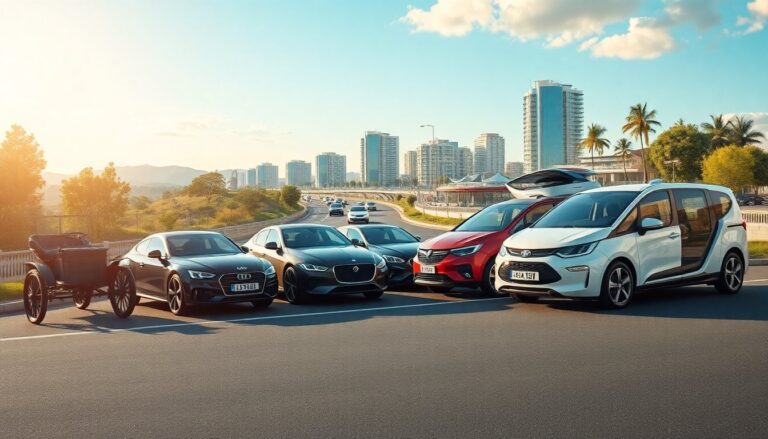Argomenti trattati
The evolution of automotive technology
The automotive industry has experienced significant transformations over the past century. The journey began with the early motor vehicles and has progressed to the emergence of electric cars and autonomous driving. These advancements in technology have been crucial in reshaping our travel experiences. This article examines the evolution of automotive technology, highlighting key milestones and considering future developments in this dynamic sector.
Early innovations in automotive technology
The late 19th century witnessed a transformative shift in transportation with the advent of the internal combustion engine. Initial automobiles, relying on steam or electricity, faced limitations in performance and range. However, the development of the gasoline engine by Karl Benz in 1886 marked a pivotal moment, ushering in a new era of mobility. This breakthrough spurred advancements in manufacturing, particularly through mass production techniques such as the assembly line, which Henry Ford pioneered in 1913. This innovation not only revolutionized the production process but also made cars more affordable and accessible to the public.
Impact of manufacturing processes
The shift to assembly line production significantly transformed the manufacturing process and propelled the growth of the automotive market. Enhanced efficiency allowed manufacturers to produce vehicles in greater quantities while simultaneously reducing costs. This era witnessed the introduction of iconic models such as the Ford Model T, which represented the democratization of automobile ownership.
The rise of safety and comfort features
As the automotive industry evolved, consumer expectations expanded beyond basic transportation. The implementation of safety features became essential, beginning with the seatbelt in the 1950s, followed by innovations like anti-lock braking systems (ABS) and airbags. These advancements stemmed from a heightened awareness of road safety, prompting stricter regulations and standards.
Technological advancements in comfort and convenience
In addition to safety, manufacturers have increasingly focused on enhancing comfort and convenience in vehicles. The introduction of climate control systems, sophisticated sound systems, and ergonomic seating has significantly transformed the driving experience. Features such as cruise control and power steering have become standard, contributing to overall user satisfaction. The integration of infotainment systems in the 21st century further underscores the industry’s dedication to improving the experience for both drivers and passengers.
The future of automotive technology
The automotive industry is experiencing a significant transformation driven by the demand for sustainability. The rise of electric vehicles (EVs) and hybrid models is reshaping the market, presenting a formidable challenge to traditional combustion engines. Major manufacturers are committing substantial resources to research and development, focusing on creating vehicles that minimize emissions and harness renewable energy sources.
The impact of autonomous vehicles and connectivity
A significant area of innovation is the emergence of autonomous vehicles (AVs). Companies such as Tesla, Waymo, and established automakers are competing to advance self-driving technology. This technology aims to transform transportation by utilizing advanced algorithms, sensors, and machine learning, allowing vehicles to navigate roads with minimal human input. The widespread adoption of AVs could lead to safer roadways and enhanced traffic management.
In addition, the integration of connectivity technologies, including the Internet of Things (IoT), is set to improve vehicle performance and user experience. Vehicles will increasingly communicate with one another and with surrounding infrastructure, creating a more efficient and responsive transportation ecosystem.
Embracing the future of automotive technology
The evolution of automotive technology has seen remarkable innovations that have reshaped our travel experiences. From the early days of the gasoline engine to today’s advancements in electric vehicles (EVs) and autonomous vehicles (AVs), the industry is entering a transformative phase. As consumers increasingly seek sustainable and connected options, the automotive sector is compelled to adapt to these expectations. The future offers significant promise, with the potential for safer, more efficient, and environmentally friendly transportation solutions for future generations.

